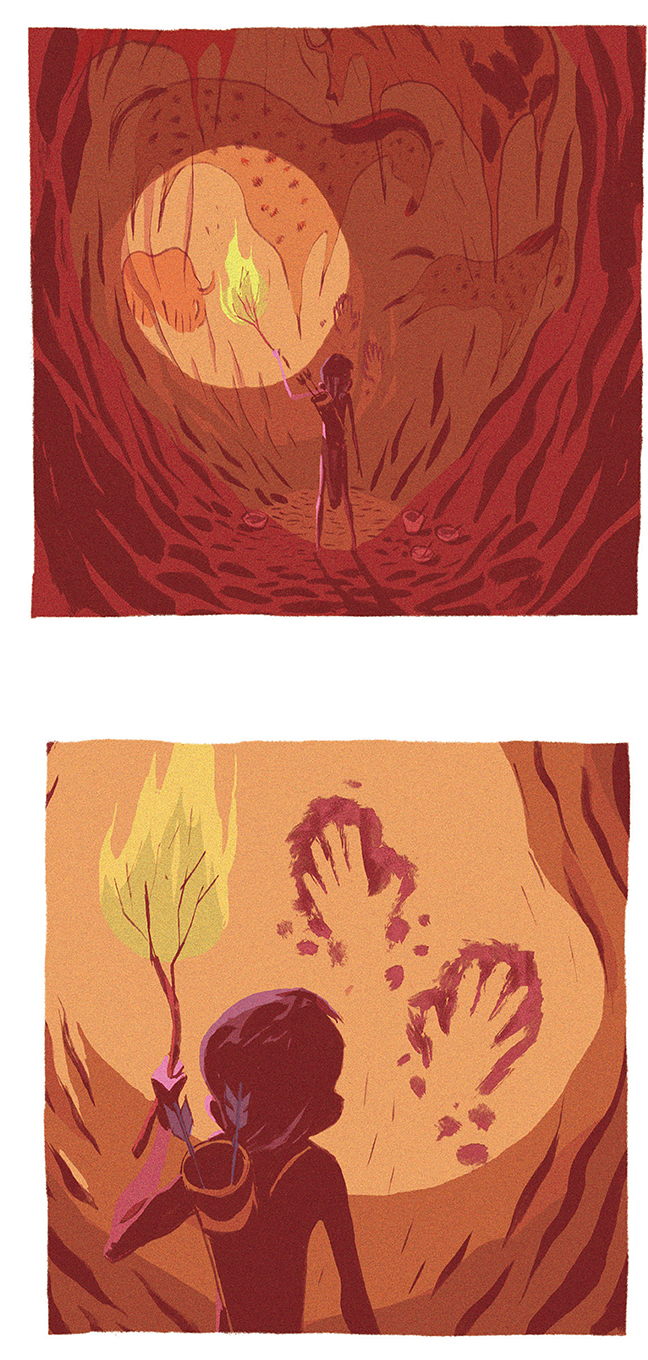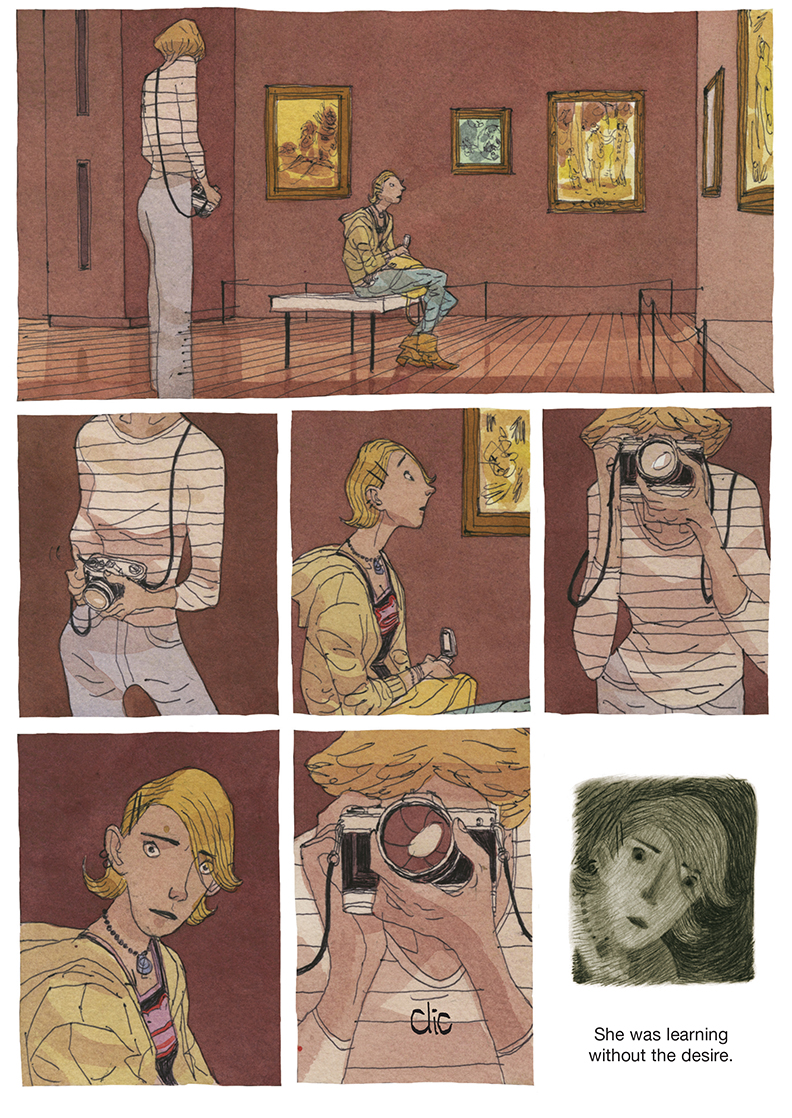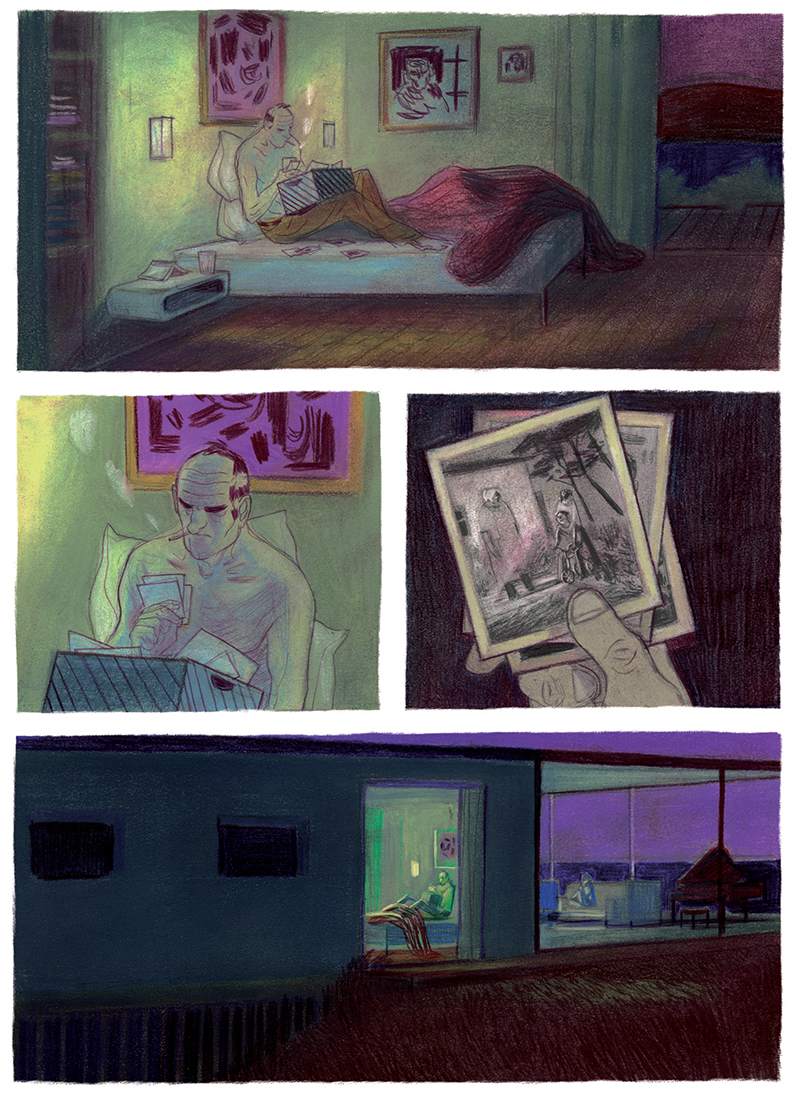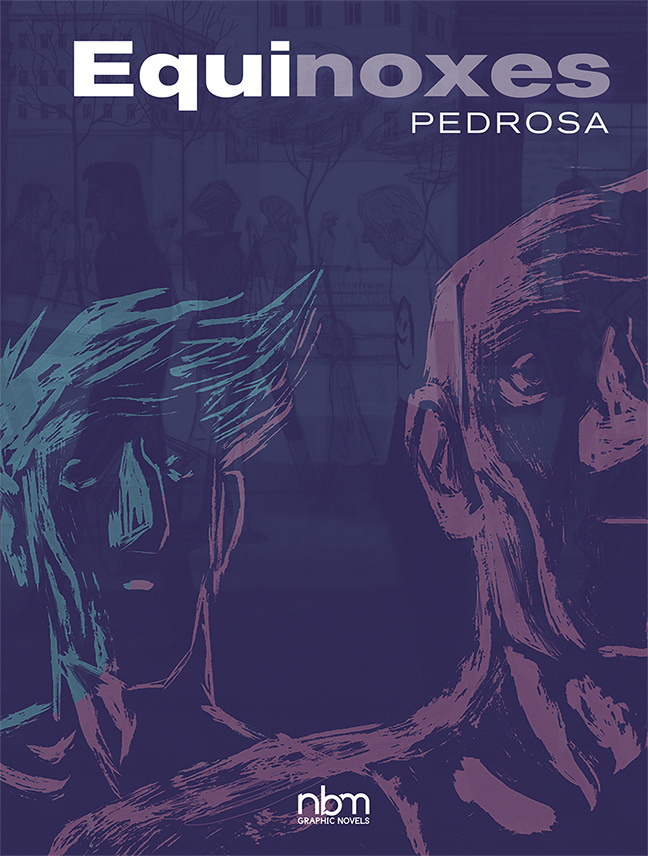Originally published in 2015 in France by Dupuis, Equinoxes by Cyril Pedrosa debuted last month in North America, courtesy of the ever-eclectic NBM Graphic Novels. Quite simply put, Equinoxes may just be one of the most important books you read this year. It is that damn good.
At its heart, Equinoxes is a book about people – how their lives intersect and diverge, how they impact their communities, how they love, and how they hate. Using a startling array of storytelling techniques, Pedrosa deftly gathers the disparate threads of his characters’ lives and weaves them into an exquisite, multi-layered tapestry.
Sprawling, layered, and resonant, Equinoxes is the type of book that only comes around a handful of time each decade. If I haven’t already convinced you to race out and pick this book up, here are three more reasons why you need to read Pedrosa’s Equinoxes.
#1 Equinoxes is a magnificent beast of a book
Weighing in at well over 300 9×12 pages, Pedrosa’s magnum opus is a massive book and an imposing read. Don’t let the size scare you off, though. This is a story that demands a high page count.
In Equinoxes, Pedrosa asks all the hard questions: “Why are we here? Why do we matter? What is our place in the bigger picture?”
There are, of course, no easy answers. As many of Pedrosa’s characters come to realize, the solutions to these conundrums rest in ourselves – in our choices, our regrets, even our faith. As the title implies, our lives are a constant struggle for balance, between light and dark, night and day, the person we can never fully liberate and the rigid masks we choose to show to the world instead.
Equinoxes is about striving for that fleeting equilibrium, that delicious moment, when straining between the opposing forces of who we are and who we want to be, we realize Life is not only all about us. It’s about everybody else, too.
#2 Pedrosa pushes the boundaries of form and structure
Pedrosa is accomplished as both writer and artist. With a background in animation, he brings to his comics a finely-tuned sense of pacing and a deep appreciation of panoramic scope. Even more compelling is his ability to slide gracefully from one media to the next, transitioning from dynamic, fully-coloured pages to textured, impressionistic black-and-white sketches to full prose without breaking stride.
The book is separated into four chapters corresponding to the seasons of the year. Each chapter is preceded by a sequence of colourful tableaux depicting the life of a young boy thousands of years in the past. The framing device acts as yet another story strand – the central cord, in fact – around which Pedrosa threads his shifting present-day narrative.

Each chapter also closes with extended prose passages from the point of view of Pedrosa’s omnipresent photographer, exposing another layer of storytelling, another seemingly disparate narrative. Pedrosa sprinkles shorter prose interludes throughout each chapter, using the photographer’s camera as a gateway into its subjects’ inner emotional lives.

It’s a virtuoso performance by a storyteller at the peak of his creative powers and enthralls the reader with remarkable ease.
#3 The artwork is transcendent
Equinoxes is a visually striking work. Pedrosa uses a variety of artistic techniques to add context and weight to his characters and their daily struggles. His way of layering a scene, using vague outlines to suggest crowds of people stenciled over his backgrounds, mirrors our own solitary movements through the masses, while adding luscious depth to each panel.
Colour is also important to Pedrosa, emphasizing emotional states and adding depth to his backgrounds. His application is thoughtful and organic, never obvious. Another storytelling tool in his impressive arsenal, colour provides insight into a character’s mood and personality.

Pedrosa’s style lacks pretension, quietly influencing our reading experience by manipulating our reactions on a visceral, subconscious level. It’s only upon multiple readings does the reader truly come to realize how Pedrosa’s sophisticated use of craft plays into the emotional landscape of his book and guides the reader on their journey.
Bonus Reason: NBM’s English translation is spot-on
I’ve reviewed several of NBM’s translated European graphic novels over the years and I have to say Equinoxes is far and away the best of the lot. Often English translations lose the natural flow and miss the unique idioms of a work’s mother tongue. Joe Johnson’s translation of the original French work is right on the money – fluid, organic, and easy to read. Kudos to Johnson and NBM for a first-rate job capturing the subtle nuances of such a complicated and dense work.
Published by NBM Graphic Novels, Equinoxes is available now from all fine purveyors of comics and novels, graphic or otherwise.
















